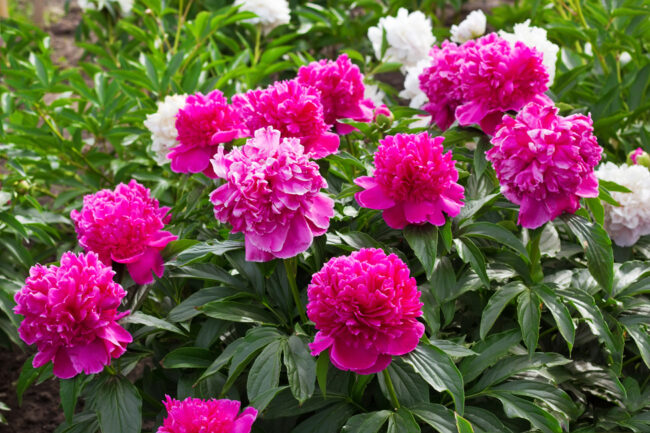
Indiana has had four official state flowers. Our first, the carnation, is native to England and was adopted in 1913.
It was succeeded in 1923 by an Indiana native, the tulip tree. In 1931, the zinnia, native to Mexico, was adopted. Our current state flower, the peony, is from China and was adopted in 1957.
There is some interesting history surrounding the adoption of the peony. It’s sufficient to say there was controversy.

The story goes that because the peony is not native to the Hoosier state, in 1995 the Indiana Native Plant and Wildflower Society and the Indiana Academy of Science lobbied to name the fire pink, a native wildflower with tiny clusters of red starry florets, as our state floral emblem. Despite the support of 55 experts and 27,000 fourth-graders, this attempt was unsuccessful, and the peony remains our state flower.
Peonies bloom just once a year, from the end of May to early June. An easy-to-grow, mostly trouble-free perennial, they have been in this country since colonial days and were featured at the Philadelphia Centennial Exposition in 1876 to symbolize the American spirit: ambition and determination to adapt and thrive.
Celebrated for centuries for their healing and magical properties, peonies were first taken to England by the Roman legions in 1200. The plant was named for Paeon, physician to the Greek gods and is the Greek symbol for healing. The Chinese have grown the flower for 2,000 years and it is considered the Chinese flower of prosperity.
There are herbaceous peonies (P. lactiflora) and tree peonies (P. suffruticosa), and one of the many impressive characteristics of the Paeonia genus is longevity. Some peony plants are reported to last more than 100 years, though of course most gardeners are unable to verify this claim personally.
Tolerant of a wide range of soil types, peonies perform best in neutral to slightly alkaline soils that are light, fertile, and rich in organic matter. They cannot tolerate poor drainage and need full sun, or only afternoon shade in excessively hot areas. Peonies benefit from support (e.g., wire frames) to prevent their flowers from being knocked into the mud during spring storms.
Their roots should be planted so that the eyes (pinkish buds on the thick root system) are no more than 1 1/2 inches below the surface. If planted too deeply, these plants will never bloom. If planted correctly, they rarely need division. If you must divide or move them, do it in the fall. They should be separated so that there are three to five buds per division.
Peonies produce cup-, bowl-, or saucer- shaped flowers. Single-flowered varieties have five to 10 petals surrounding a central boss, or cluster, of yellow or cream stamens. Double flowers may hide their stamens or not have any, and the large number of petals creates a fuller, lush effect. Some of the flowers have petals with a sheen that gives the impression of satin or taffeta. All herbaceous plants produce an abundance of dark green, deeply-indented leaves that look attractive throughout the growing season. They grow exceptionally well in the Midwest and are so easy-care that no Indiana garden should be without their lavish display each May.











